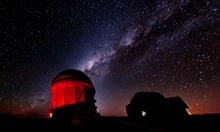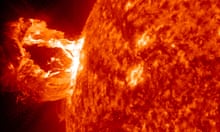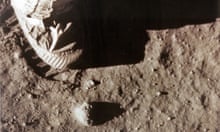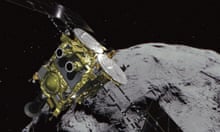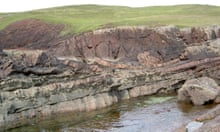The cosmic collision that made the moon left a host of elements behind on Earth that were crucial for life to emerge, US scientists have claimed.
The impact 4.4bn years ago is thought to have occurred when an itinerant planet the size of Mars slammed into the fledgling Earth, scattering a shower of rocks into space. The debris later coalesced into the moon.
Beyond an act that shaped the sky, the smash-up transferred essential elements to the Earth’s surface, meaning that most of the carbon and nitrogen that makes up our bodies probably came from the passing planet, the researchers believe.
Petrologists at Rice University in Texas reached their conclusions after running experiments on geochemical reactions under the high temperatures and pressures found deep inside a planet. They wanted to understand whether Earth acquired key elements from meteorites that slammed into Earth or through some other ancient route.
Lead author Damanveer Grewal found that a planet with a sulphur-rich core would have large fractions of carbon and nitrogen on its surface. Such a planet could transfer that volatile material to Earth in just the right proportions if it happened to clatter into it, the researchers found, after modelling a billion different cosmic scenarios in a computer and comparing them to conditions seen in the solar system today.
“From the study of primitive meteorites, scientists have long known that Earth and other rocky planets in the inner solar system are volatile-depleted. But the timing and mechanism of volatile delivery has been hotly debated,” said Rajdeep Dasgupta, who worked on the project. “Ours is the first scenario that can explain the timing and delivery in a way that is consistent with all the geochemical evidence.” The research is published in Science Advances.
“This study suggests that a rocky, Earth-like planet gets more chances to acquire life-essential elements if it forms and grows from giant impacts with planets that have sampled different building blocks, perhaps from different parts of a protoplanetary disc,” he added. The disc is the doughnut of material from which the planets form.
Earlier this month, an international team of researchers discovered that the rate of asteroid strikes on the moon, and by extension the Earth, shot up nearly threefold 290m years ago, probably after two or more giant bodies in the asteroid belt between Mars and Jupiter crashed together and sent a barrage of space rocks into the inner solar system.
On Monday astronomers captured a meteorite striking the moon during the total lunar eclipse. It is not yet clear whether the peak strike rate is over.


